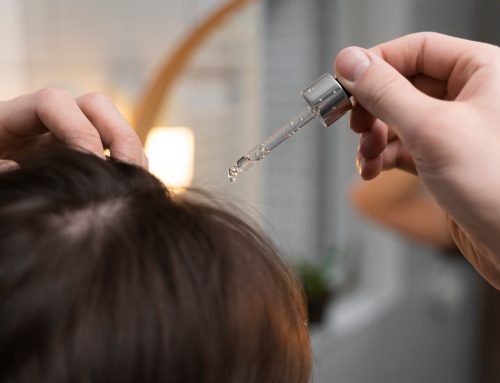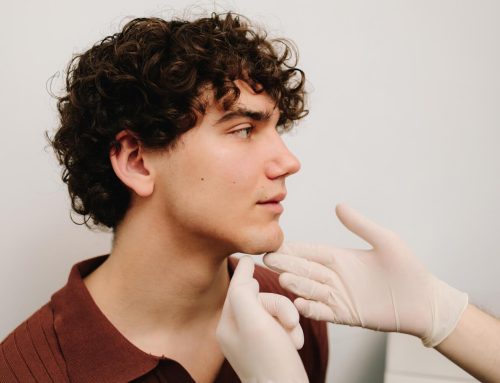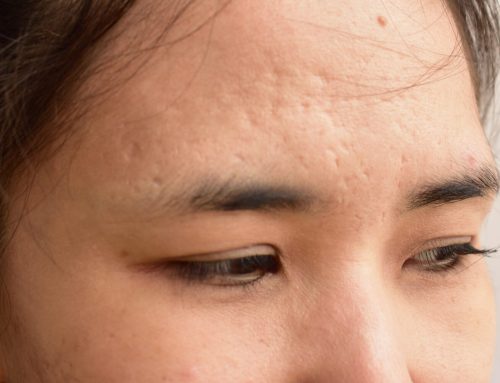Androgenetic alopecia is the most common cause of hair loss, affecting 80% of Caucasian men and 50% of Caucasian women on the planet. Although it is less prevalent in other skin types, it also occurs in Asians or Africans.
The feature of this hair loss is that it produces a recession in the temporal area, right at the temples and in the frontal area of the scalp, in such a way that the frontal hairline recedes backwards. As we get older, the surface area of our forehead and what we call receding hairline tends to increase. The process continues with a reduction in the thickness of the hair shaft that mainly affects the crown and the upper part of the scalp. In some patients, especially women, there is a diffuse global reduction in hair thickness, without the frontal hairline suffering a backward recession.
One of the causes of this hair loss or reduction in hair thickness is the androgen receptor (AR), a genetically determined character. Another important part of the genetic alopecia equation is an enzyme called 5 alpha reductase (types I and II, 5AR). Interestingly, both men and women who suffer from Androgenetic Alopecia, or baldness, have much higher levels of androgen receptors (AR) and 5 alpha reductase (5AR) in the regions of the scalp most affected by baldness. We also know that the activity of 5AR (I and II) in the hair follicles in the frontal region is three times greater in men than in women, which is why in men this type of problem is considered more androgen-dependent, while in women its cause is less known.
Hair growth takes place through a cycle that can be subdivided into four phases:
- Anagen phase: the hair grows from the follicle for a period of time between two and seven years.
- Catagen phase: lasts approximately two weeks. It involves the change of the cycle and involution due to a process known as apoptosis.
- Telogen or resting phase: lasts approximately 12 weeks. The hair stops growing and the follicle is unchanged.
- Exogen phase: the hair is expelled and new hair grows again.
What characterizes androgenetic alopecia is the miniaturization of the hair follicle and hair shaft. This phenomenon occurs at the end of the catagen phase or at the beginning of the anagen phase. This anomaly was usually considered irreversible, although the latest results of new therapies have shown that this is not the case.
What does research say about the genetics of baldness?
The processes involved in the development of adrogenetic alopecia depend fundamentally on the activity of certain androgenic hormones and a genetic predisposition. It is known that there is a genetic predisposition because we know that certain populations in the world, such as Europeans, suffer more alopecia than other populations in other parts of the world.
In a study published in 2003 by Nyholt in the Journal of Investigative Dermatology, it was found that identical twins share an 81% predisposition to developing androgenetic alopecia.
Much research has been done on the intimate mechanism by which hair becomes small. Whiting and cols. published an interesting study in 2001, in the Journal of the American Academy of Dermatology, where a reduction in the number of stem cells present in the dermal papilla was observed. In another study published by Wang and collaborators in the journal Science (2016), it was observed that a gene called FOXC1 is highly expressed in active hair follicles, which allows the adherence of these cells to the hair structure, so that they are constantly reproduced. Alterations in this gene could explain baldness.
It seems that the erector pili muscle also plays a very important role in holding the entire structure together. Torkamani observed the degeneration of this muscle in patients suffering from androgenetic alopecia and its replacement by adipose tissue. It is believed that the replacement of muscle by fat may be one of the mechanisms involved in hair miniaturization.
What genetic alterations have been discovered in patients with androgenetic alopecia?
One of the first things we know is that people who suffer from Androgenetic Alopecia have a high expression of both 5AR and AR type enzymes in all those scalp cells affected by baldness.
It is believed that the gene encoding for the androgen receptor, AR, accounts for 40% of the total genetic risk, which is considered a very high risk for a single gene in a disease. One of the most interesting studies has been published by Prodi and cols. and showed that both the AR gene and the E2R gene present on the X chromosome are strongly associated with the risk of suffering from androgenetic alopecia.
All these findings show how we are able to better understand why people develop Alopecia. However, taking into account that there is still no gene therapy, all the treatments we use to prevent baldness or even to reverse it are necessary life lasting. This is perhaps the most important lesson of all the genetic studies being carried out: when a disease is genetic, treatments are continuous for life.



